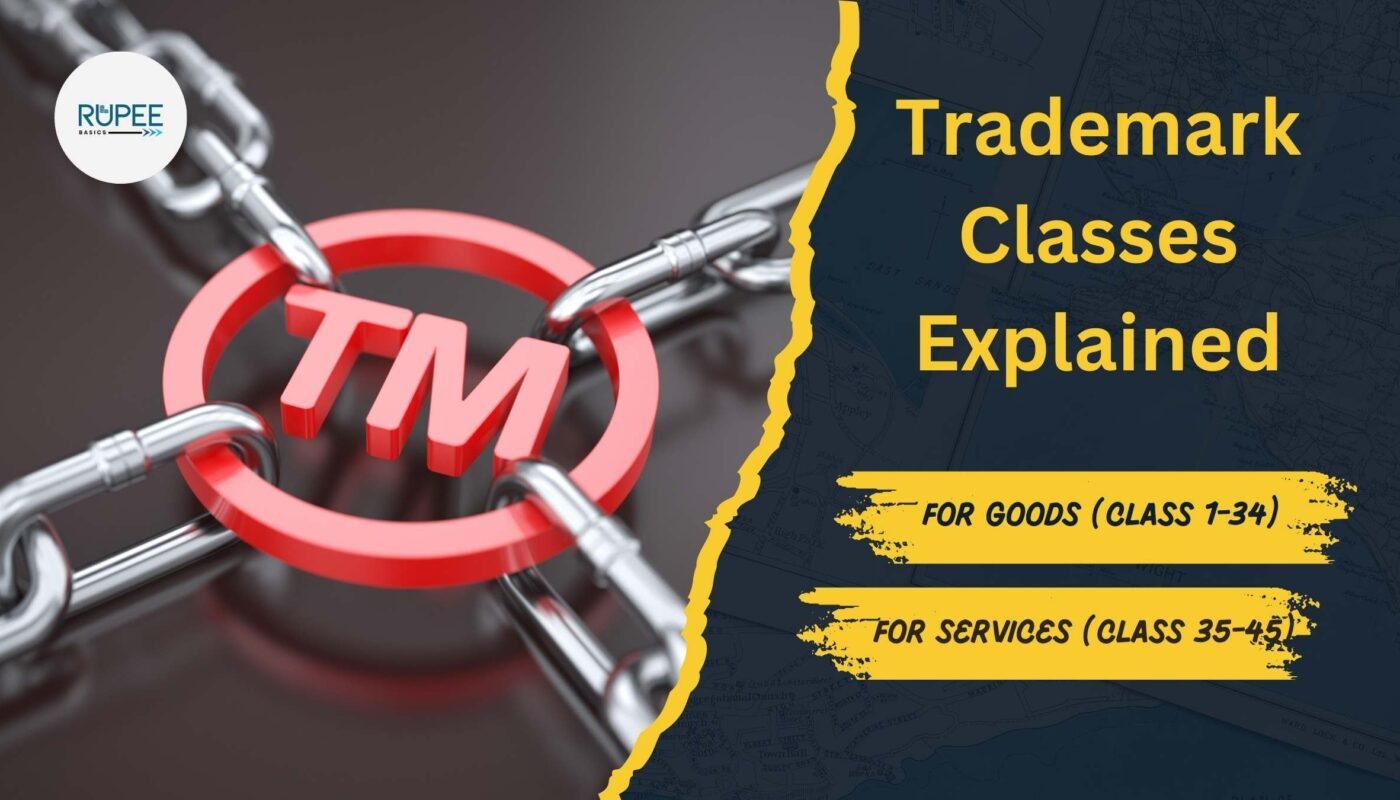Understanding Trademark Classes: A Complete Guide for Beginners
When registering a trademark in India or any other country, selecting the right trademark class is crucial. Trademark classes help in categorizing different types of goods and services to avoid conflicts between businesses operating in distinct industries.
This guide will help you understand trademark classes in simple language so that you can choose the right one for your business.
What Are Trademark Classes?
Trademark classification is divided into 45 classes, where Classes 1-34 cover goods and Classes 35-45 cover services. Every product or service falls under a specific class, and selecting the correct class ensures that your trademark is protected within your industry.
Trademark Classes List with Descriptions
Below is a simplified table listing all trademark classes along with their descriptions to help you choose the right class for your business:
| TM Class | Description |
|---|---|
| Class 1 | Chemicals used in industry and science, including adhesives, unprocessed plastics, and fertilizers. |
| Class 2 | Paints, varnishes, colorants, and protective coatings. |
| Class 3 | Cosmetics, perfumes, and cleaning products. |
| Class 4 | Industrial oils, greases, fuels, and candles. |
| Class 5 | Pharmaceuticals, dietary supplements, and baby food. |
| Class 6 | Metal goods, including building materials and metal hardware. |
| Class 7 | Machinery and machine tools. |
| Class 8 | Hand tools and cutting tools. |
| Class 9 | Electronic and scientific equipment, including software, computers, and cameras. |
| Class 10 | Medical and surgical instruments. |
| Class 11 | Lighting, heating, and cooling equipment. |
| Class 12 | Vehicles and vehicle parts. |
| Class 13 | Firearms, explosives, and ammunition. |
| Class 14 | Jewelry, watches, and precious metals. |
| Class 15 | Musical instruments. |
| Class 16 | Paper products, stationery, and printed materials. |
| Class 17 | Rubber and plastic materials. |
| Class 18 | Leather goods, bags, and luggage. |
| Class 19 | Building materials (non-metallic). |
| Class 20 | Furniture and plastic goods. |
| Class 21 | Kitchenware and household items. |
| Class 22 | Ropes, tents, and tarpaulins. |
| Class 23 | Threads and yarns. |
| Class 24 | Textiles, fabrics, and linens. |
| Class 25 | Clothing, footwear, and headgear. |
| Class 26 | Lace, buttons, and embroidery. |
| Class 27 | Carpets, rugs, and floor coverings. |
| Class 28 | Games, toys, and sports equipment. |
| Class 29 | Food products like meat, dairy, and preserved foods. |
| Class 30 | Coffee, tea, bakery goods, and confectionery. |
| Class 31 | Agricultural and horticultural products, fresh fruits, and vegetables. |
| Class 32 | Beverages (non-alcoholic), juices, and soft drinks. |
| Class 33 | Alcoholic beverages (excluding beer). |
| Class 34 | Tobacco and tobacco products. |
| Class 35 | Business management, advertising, and marketing services. |
| Class 36 | Financial and insurance services. |
| Class 37 | Construction and repair services. |
| Class 38 | Telecommunications and broadcasting services. |
| Class 39 | Transportation, travel, and logistics services. |
| Class 40 | Manufacturing and material treatment services. |
| Class 41 | Education, training, and entertainment services. |
| Class 42 | Scientific and technological services, including IT and software development. |
| Class 43 | Hospitality services, restaurants, and catering. |
| Class 44 | Medical and veterinary services. |
| Class 45 | Legal services and security services. |
Frequently Asked Questions (FAQs)
1. Can I register my trademark under multiple classes?
Yes, you can apply for multiple trademark classes if your business deals in multiple categories of goods or services.
2. What happens if I choose the wrong class?
Choosing the wrong class may lead to rejection of your application or limited protection. It is advisable to consult a trademark expert.
3. Do trademark classes apply worldwide?
Most countries follow the Nice Classification System, making trademark classes similar worldwide.
4. Is there a separate fee for each class?
Yes, trademark registration fees apply separately for each class.
5. Can a similar trademark exist in different classes?
Yes, if businesses operate in unrelated industries, the same or similar trademark may be registered under different classes.
Conclusion
Understanding trademark classes is essential to protecting your brand in the right industry. By selecting the correct trademark class, you ensure your business identity remains unique and legally protected. If you’re unsure about the right class, consult a trademark expert to avoid mistakes in your trademark application.
“The road to success and the road to failure are almost exactly the same.” – Colin R. Davis
📢 Need Expert Help with Finance & Taxation?
Get professional assistance on Taxation, Business Registration & Compliance. 🔗 Contact Us for expert guidance! 🚀

